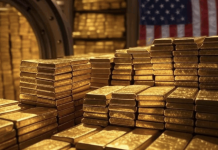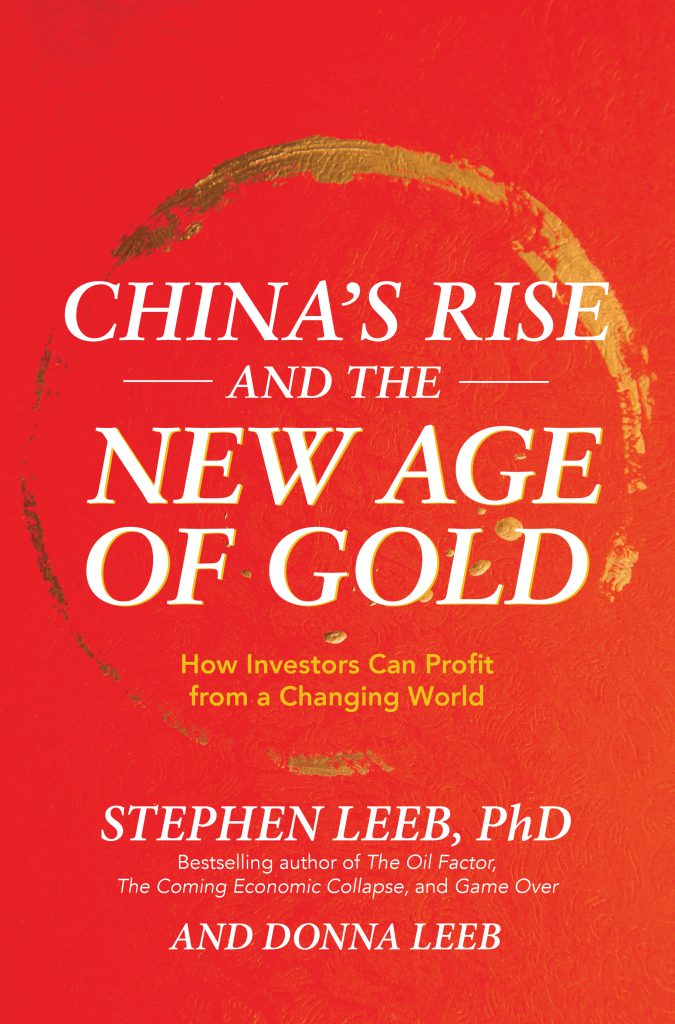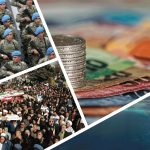Warren Buffett occupies an iconic place in the investment sphere. and there are many reasons people pay close attention to his thinking. Most obvious, of course, is the phenomenal success of Berkshire Hathaway, who, in the early 60s, bought a textile company, which he reorganized into arguably the most successful long-investment vehicle in the history of capitalism. A hundred dollars invested into Berkshire in 1965 would be worth about $2.5 million today, compared to about $23,000 if the same investment were made in the S&P 500. This kind of success is not an accident, which makes his annual letter to shareholders a reading for investors trying to benefit from the thoughts of arguably the greatest investor of all time.
The views in his recently released letter that summarized 2023 results surprised me. The comments in the letter complement his recent investment decisions, which mark a subtle but sharp departure from his long-held thinking. While he still walks the walk in terms of his alloyed praise of America, there are unmistakable signs of chinks in what was formerly unalloyed praise for our country.
Buffett also has character traits that set him apart, such as the get-rich-quick attitude that permeates Wall Street. An interview two years ago, available on YouTube, with his sister Bertie makes clear her brother is about much more than about the love of money. Morality trumped money for Buffett and his recently deceased partner, Charlie Munger. Their great motivator was doing something well and with integrity.
Why am I offering these details about Buffett, some of which you might already know?
Along with all the above, Buffett has long been known for something else: his unabashed love for, and belief in, America, his view that the U.S. is a special and remarkable country that it will never pay to bet against.
Time and again in his letters to shareholders, which he has been writing each year since 1965, he has asserted this belief in America. From last year’s letter:
“We count on the American Tailwind, and though it has been becalmed occasionally, its propelling force has always returned. I have been investing for 80 years – more than one-third of our country’s lifetime. Despite our citizens’ penchant – almost enthusiasm – for self-criticism and self-doubt, I have yet to see a time when it made sense to take a long-term bet against America. And I doubt that any reader of this letter will have a different experience in the future.”
That was last year. A year later, reading his letter released on Feb.24, I detected a distinctly different vibe that strongly hints at a more pessimistic and much riskier economic outlook. He has protected Berkshire from a massive economic catastrophe while shielding against a sharp rise in inflation.
One of the most striking takeaways is the extraordinary level of cash Berkshire Hathaway, the company Buffett controls and through which he makes his investment decisions, has on
his balance sheet. That total of a record $170 billion dollars comes with his comment that he sees no U.S. companies into which to deploy it. Buffett also cautioned shareholders that because of Berkshire’s size, the “eye-popping gains” of the past are no longer obtainable. That is a comment that he has made many times in the past.
What is different this time is that he does not indicate that he has little and that he is even looking for a major purchase. Also different is that his case horde has been rising steadily for over a decade. Recently, cash has risen by over 75% in the quarters since 2013. Moreover, the most recent gains in cash of about $60 billion in the past three quarters came largely from stock sales. For most of the century, whenever cash rose, it turned out to be transitory and was followed by one or more major investments or additions to existing holdings.
Also notable was that the only investments Buffett mentioned with strong enthusiasm were non-U.S. companies, specifically, the five large diversified Japanese trading companies he first invested in during the Pandemic in mid-2020. This past year, he increased Berkshire’s stake in all five to around 9% and suggested that he might add further to his positions. A major benefit of Berkshire’s partnership with the five, he wrote, is that it could expand Berkshire’s opportunity to gain other interests around the world, i.e., outside the U.S. This could mean access to products needed by supply chain problems affecting many of the private companies Berkshire holds or even spotlighting other possible company investments. It is worth mentioning that these trading companies have been intensely cyclical in the past, doing very well when growth is strong and resource scarcities are rising.
Buffett’s comment about Berkshire’s energy, BHE, which continues to report big losses, should be stressed not only because it affects BHE but also the entire U.S. economy. BHE has been involved in a grid project covering 30% of the country since 2006, and there is still no timetable for when it will be finished. He wrote: “When the dust settles, America’s power needs and the consequent capital expenditure will be staggering.” In the meantime, while we wait for girds that can handle new energies, the CEO of the largest holder of new energy assets has reported that electricity prices, which have been stable for about 20 years, will rise by over 80% over the next five years.
Speaking of sources of inflation, outside of arbitrage, Occidental Petroleum, a leading U.S. producer of oil, was the only American public company to which Berkshire has been buying over the past several quarters. Hard assets like oil are value plays that act as a hedge against inflation; Buffett has never bought in the past. Yet today, two of his top ten holdings profit from fossil fuels. Buffett’s investments in companies like oil and trading play that historically are leveraged to real assets, which are cyclical against type for a master at spotting companies with strong moats. Oil is oil no matter who is producing it – the moat concept is, to say the least, difficult to apply.
Berkshire’s combined holdings in the five trading companies plus his holdings in Chevron and Occidental, when also added to his cash holdings, exceed any other assets – private or public that Berkshire currently owns. In his nearly 60 years at Berkshire’s helm, Buffett has never been more hedged against economic calamity, which includes wild inflation, than he is today. Moreover, his largest company division, insurance, is the largest worldwide insurer, meaning it can park liquid assets in different countries and currencies. This is a company that is as much divorced from the economic happenings in the U.S. as possible.
While not explicitly predicting an economic meltdown, Buffett wrote about the possibility of “financial disasters of a magnitude beyond any heretofore experienced” and said Berkshire could handle any such seizing up of the economy. “When economic upsets occur, as they will, Berkshire’s goal will be to function as an asset to the country – just as it was in a minor way in 2008-9 – and to help extinguish the financial fire rather than to be among the many companies that, inadvertently or otherwise, ignited the conflagration.” That is not the assurance you give if you believe economic conditions are strong.
Buffett’s change – one which led him even to trim his holdings of Apple, a public holding so much larger than any other stock holding (though whose value is still less than the cash he holds) that in 2021 noted that his over 5% interest in the stock made it the second most valuable part of Berkshire, trailing his insurance business but ahead of his rail and energy divisions. Though he sold only a very small part of his position, even a small sale suggests that he considers his favorite public company no longer immune from the unpredictability of today’s world.
In stating that we are facing a financial beyond the magnitude of 2008, it is important to realize that it is saying a lot, more than almost anyone wants to hear. In 2008, the country was brought to its knees. Millions were left homeless because of an unprecedented number of housing foreclosures, major banks were given massive bailouts, while interest rates fell to historic lows; at its bottom in 2009, the S&P had declined about 60%. There was a liquidity crisis of unprecedented magnitude. Even some of the largest companies at the time, such as General Electric, had trouble making payrolls as there were no buyers for its commercial paper. Buffett happened to be a critical player in saving the day in 2008, giving his “magnitude beyond” description of a potential coming crisis even added meaning.
Behind the scenes, Buffett undoubtedly played a major advisory role during the 2008 crisis. In a September 8th interview on CNBC, he called the $700 billion bailout (known as TARP) of the central banks the “right thing” in the face of an “economic Pearl Harbor.” Buffett likely could have taken some credit for the bailouts in his ad hoc advisory role to government officials. But more than just walking the walk, he talked the talk. Arguably, Buffett saved the entire financial industry at that time. But if you think that statement is too grandiose – and I think it is accurate – no one can quarrel that without Buffett Goldman Sachs, it is likely just one example of a firm that would not exist today. Before the crisis, Goldman was a very large brokerage, trading, and investment banking firm. When the crash hit, the company quickly reorganized so that it qualified to be recognized as a commercial bank and thus eligible for government funds. However, many would argue that the real
savior of the storied investment house was Warren Buffett, who, at the height of the crisis in September 2008, bought 10% of Goldman’s stock in a complex transaction. Buffett’s purchase allowed the company to offer additional shares to the public, giving it additional badly needed funds to qualify for government funds under the TARP program. In a 2008 e-mail made public in 2018, Goldman admitted it was “toast” in 2008 save its ability to get government funding. The fact that the stock declined about 85% during the crisis makes this comment more credible.
In contrast to Buffett, Fed Chairman Powell said in his press conference following the recent Fed meeting that the economy was experiencing solid growth and prospects of declining inflation. Powell’s assessment suggests that the Fed Chairman is out of touch with reality or deliberately disassembling. Either way, I find Powell’s reassurance more jarring than reassuring.
For those who might think that nonagenarians are unwarrantedly disposed to pessimism, I will counter with just a few easy-to-understand numbers that show you otherwise. Some of these points I have discussed in previous blogs, while others are in the “to come” variety.
What changed in America led to a bearish turn by the world’s greatest ever investor and the need for our number 1 policy maker to make believe America is still at the top of his game? The world has become a much more volatile place. Specifically, the animosity between the West and what is referred to as the global South, most notably BRICS, in which China and Russia have become leading global challengers to U.S. hegemony. Wars, large tariffs, and sanctions unfortunately characterize this intense rivalry. Given that BRICS will likely dominate the production and distribution of critical resources, supply chains ranging from energy to semiconductors will likely be at risk for the foreseeable future. Risk to supply chains will be accentuated by resource scarcities, which will result from growth in developing economies.
This challenge from the South and East comes while America’s 50-year slide has started to accelerate sharply. The decline was relatively moderate from the early 70s to the beginning of the new century. Since the new millennium, however, the decline has been accelerating. The table reveals a terrible truth about this once great country. The table displays the affordability of necessities, food, health care, transportation, and shelter. The table shows that in 2000, the median household income was $41 thousand, while necessities cost about $34,500, just shy of 85% of the median income.
Now, flash forward to 2023; you can see in our table that the median family income is about 84% to about $74,500. Using well-respected measures of inflation for each of the four categories of necessities, we find the total cost is $93,000, or about 124% of the median income. This means the family at the 50th percentile can no longer afford these necessities.
Their choices are to go into debt or do without. Most families choose some combination. The family income needed to afford necessities, about $95, suggests only the upper 40% of households can cut. Bear in mind that this cut just includes life’s necessities. That means it ignores education, debt repayments, vacations, and many other things that many of us still take for granted.
This kind of data about limited access to life-sustaining products and services goes hand in hand with the extraordinary statistics about life expectancy. According to the World Bank, as of 2021, it has declined about one year for Americans in this century. We have the lowest life expectancy of any major developed country, where the average is about 80 years, and many developing countries, such as China, whose life expectancy now exceeds ours by about two years.
Declining life expectancy and limited access to necessities are part and parcel of an unholy trinity. The third part is a society characterized by extreme inequalities. Of the plethora of statistics that speak to this issue, disparities in wealth stand out. According to recent statistics, the top 1% controls nearly 31% of the nation’s wealth, while the top 10% controls close to 70%. The bottom 50% holds less than 1-1/2 percent.
Inequalities of this sort lead to a vicious circle that rarely ends with a whimper. The rich get dibs on all the good material things in life, while the poor, who lack full access to everything from health care to good schools, get even poorer. A major consequence of a society driven solely by money is that the best no longer rise to the top. Moreover, money buries societal goals and the ideas it takes to achieve that goal. With money in the driver’s seat, history teaches it is only a matter of time before the car crashes and a bloody mess ensues, as there always comes a time when all the money in the world is overmatched by coherent competitors who have built their societies as meritocracies.
Our control of the printing presses is no longer enough of a weapon to keep us on top. The proof is in front of us. In the Ukraine war, all the money, sanctions, and Western weaponry and military technology have been lost badly, leaving in its wake an EU in total disarray and an America with so much debt that diehard American voter Warren Buffett is buckling up.
















